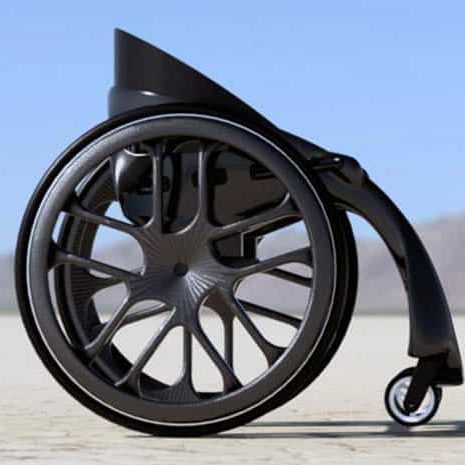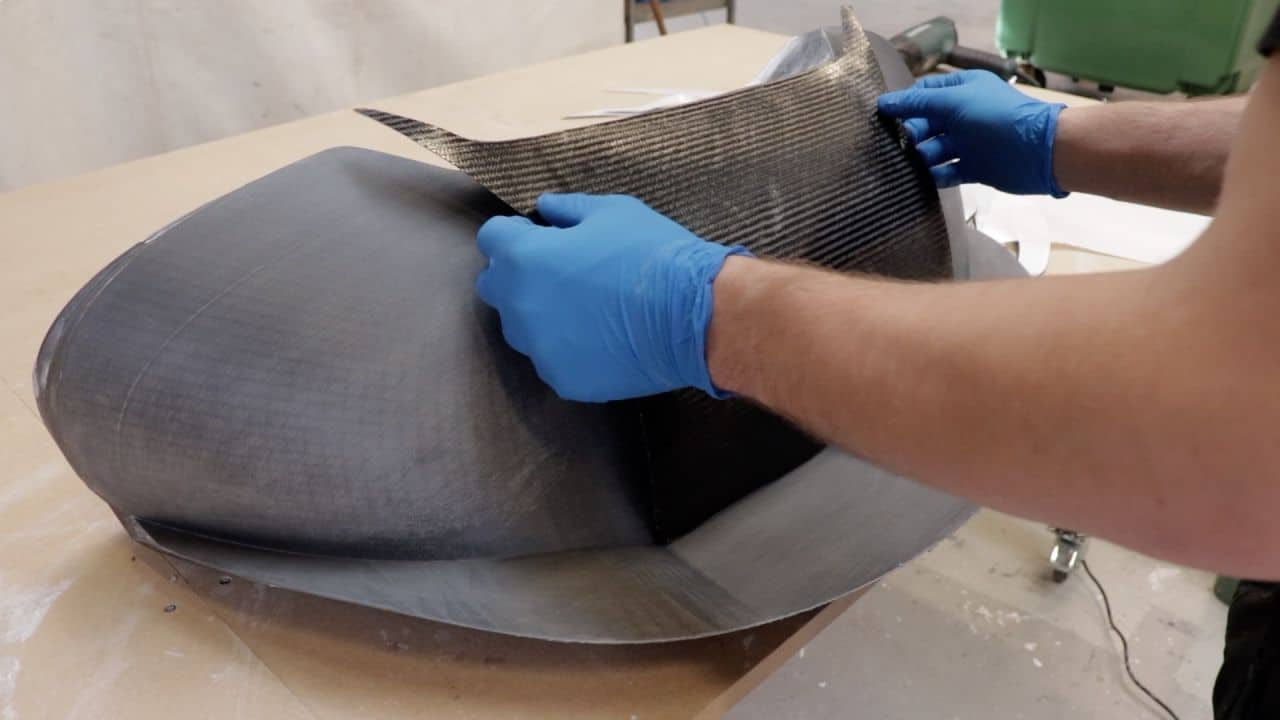
HI-TEMP CF
STRONG AND HEAT-RESISTANT

AVAILABLE COLORS
BigRep's HI-TEMP CF is a strong, engineering-grade filament with a high heat deflection temperature. Compared to BigRep HI-TEMP, HI-TEMP CF boasts even greater stiffness thanks to the addition of 10% carbon fiber.
With the combination of durability and heat resistance, BigRep HI-TEMP CF is ideal for functional applications in demanding conditions and industrial environments. Thanks to its high stiffness, HI-TEMP CF is ideal for 3D-printed patterns and molds for a range of forming applications.
A reliable and easy-to-use material, BigRep HI-TEMP CF is optimized for large-format 3D printing on BigRep machines, producing lightweight yet rigid parts. Produce functional industrial parts at an accessible price.
MADE FOR
![]()

![]()

![]()


Stiff and Durable
Parts

Lightweight
3D Prints

Good Heat Deflection
Temperature

Easy to Print for
Wide Range of Uses

Excellent
Surface Finish
What is HI-TEMP CF 3D Printing Filament?
BigRep’s HI-TEMP CF is a tough engineering-grade filament known for its high heat resistance and durability. The 3D printing material is made up of BioPolymer (a PLA-based thermoplastic blend) and is reinforced with 10% chopped carbon fiber. The addition of the fibers provides additional stiffness and strength compared to BigRep’s HI-TEMP filament.
In addition to the aforementioned characteristics, HI-TEMP CF also has a good strength-to-weight ratio and has been optimized for large-format extrusion. The filament is compatible with many BigRep systems, including BigRep ONE, STUDIO G2, PRO, and other fused filament fabrication (FFF) systems.

Why Use BigRep HI-TEMP CF Filament?
Thanks to the material’s excellent toughness and heat deflection, HI-TEMP CF filament is a good choice for many engineering and industrial applications. In particular, HI-TEMP CF is ideal for manufacturing patterns and molds since it can withstand the temperatures and pressures of the thermoforming process as well as the temperatures involved in carbon fiber prepreg curing.
The engineering-grade filament can also benefit industrial users in segments like automotive, motorsport, and aerospace (to name just a few), who can benefit from the material’s combination of high heat resistance, lightweight, and durability. HI-TEMP CF also boasts good UV resistance and can thus be used reliably in outdoor applications.

End Use Parts

Factory Tooling

Carbon Fiber Molding

Functional Prototypes
Benefits of 3D Printing BigRep HI-TEMP CF
HI-TEMP CF offers a number of benefits to users. In addition to its heat deflection and robust material properties, which are ideal for tough applications, the filament is easy to print. More specifically, the filament is not prone to warping (though it can still be used with a bed adhesive) and has a high quality matte surface finish. This high quality finish straight off the build platform is characteristic of carbon fiber reinforced filaments, which have less distinguishable layer lines. Of course, BigRep HI-TEMP CF can be post-processed using a variety of methods to achieve a superior finish and tolerances.
HI-TEMP CF has a unique combination of material properties that offer many advantages to users, particularly if they are looking for heat resistance and superior durability. The most benefits and best printing results when using HI-TEMP CF can be unlocked by implementing the right printer settings.
Recommended print settings
- Nozzle temperature: 210 - 240 °C
- Print Bed Temperature: 50 - 80 °C
- Chamber Temperature: n/a
- Print Speed: >40 mm/s
HI-TEMP CF is perhaps best known for its excellent stiffness and durability. With a tensile strength of 65 MPa, the material can withstand significant stresses and loads without breaking. BigRep HIGH-TEMP, by comparison, has a tensile strength of 61 MPa, while ABS has a tensile strength of 30 MPa. The HI-TEMP CF carbon-fiber composite is also lightweight, with a density of 1.20 g/cm³.
As the name suggests, HI-TEMP CF was engineered with thermal resistance as a top priority. The filament has a high heat deflection temperature (HDT) of up to 115 °C, surpassing the heat resistance of ABS, ASA, and HI-TEMP materials. In terms of printing temperatures, the filament requires a nozzle heated to between 210 and 240 °C, and best quality print results are achieved with a heated print bed up to 80 °C.
HI-TEMP CF is characterized as a chemically stable product, and is resistant to UV exposure. However, the PLA-based material with carbon fiber reinforcement is susceptible to some chemical degradation: it’s recommended to avoid exposure to strong oxidizing agents and strong acids when post-processing or when in use.
What to Look Out for When 3D Printing BigRep HI-TEMP CF
The primary thing to be aware of when printing BigRep HI-TEMP CF is that the material is more abrasive due to the addition of carbon fiber. This means that the printing process requires a heavy-duty nozzle, preferably made from hardened steel. Upgrading your BigRep 3D printer nozzle to accommodate this engineering-grade filament will help to prevent hotend wear and improve print outcomes.
Although warping is not a significant issue when printing HI-TEMP CF, users can benefit from the use of print bed adhesives to improve first-layer adhesion. There are a few adhesion options that work well with this filament, including Kapton tape and Magigoo glue (or a combination of both). Alternatively, BigRep’s removable and flexible print surface, SWITCHPLATE, works well with HI-TEMP CF and does not require additional adhesives.
Best Practices for Storing and Handling BigRep HI-TEMP CF
To achieve the best print outcomes with HI-TEMP CF, it’s important to follow proper storage and handling guidelines. Like many filaments, HI-TEMP CF is hygroscopic, meaning it absorbs moisture from the environment. Printing “wet” filament can lead to issues like stringing and compromise print quality. Fortunately, this can be avoided by storing HI-TEMP CF spools in a dry environment, such as the BigRep SHIELD.
If your spool of filament has been exposed to humidity, you can also dry HI-TEMP CF before printing for 4-6 hours at 50°C. Other storage best practices include keeping the filament out of direct sunlight and storing it at room temperature. If you follow these recommendations, a spool of HI-TEMP CF will easily last for up to 24 months.
In terms of handling, it’s always a good idea to print in a well-ventilated space. Dust and vapors generated in the printing process can cause irritation, so installing the proper vents or a local exhaust, particularly if multiple printers are in use, is vital. Moreover, because HI-TEMP CF requires high print temperatures, users should be cautious around the hot printhead, print bed, and molten filament.

Use Cases: See How Customers Use BigRep HI-TEMP CF
HI-TEMP CF has proven to be a versatile material with applications in a number of different areas. As we saw, the material has high heat resistance (able to withstand temperatures up to 115 °C) and is resistant to bending and stresses, which makes for a well-rounded filament that can meet the requirements of various engineering-grade applications, from functional prototypes to molds, to robust end-use components.
Airflight, a Danish aerospace company specializing in drones and flying cranes, has adopted BigRep 3D printing and HI-TEMP CF filament to streamline and improve its design and production workflows. In one use case, the company 3D printed a large-scale carbon fiber drone mold from HI-TEMP CF, which enabled it to cut its costs by five times compared to traditional CNC milling. The process consisted of 3D printing the mold, reinforcing it with filler, post-processing and waxing the print, and covering it with carbon fiber prepreg. From there, the mold and carbon fiber prepreg were sealed and cured at 100 °C, resulting in a high-quality finished drone component. In addition to the lower costs, using BigRep 3D printing and HI-TEMP CF is enabling Airflight to accelerate lead times and explore more complex shapes.
Also in the aerospace segment, SFM Technology’s AeroAdditive division developed a helicopter blade restraint cradle—the first of its kind—using BigRep’s technology and HI-TEMP CF filament. The part was designed to keep folded helicopter blades safe and steady while the aircraft is aboard a ship, or exposed to wind while stationary. The printed blades made by the AeroAdditive team were designed for aerospace and defense giant Leonardo, which wanted higher-performing cradles for its aircraft. The final products, printed on the BigRep PRO and measuring 900 x 230 x 160mm, certainly delivered. SFM Technology reported that the printed cradles made from HI-TEMP CF outperformed the original components, and the material also provided the necessary durability and weather resistance for the demanding application.

Material properties:
| Material: | BioPolymer with carbon fibre |
| Filament Sizes: | 2.3, 4.5 and 8.0 kg |
| Diameter: | 2.85 mm |
| Density: | 1.20 g/cm³ |
| Flexural Modulus (ISO 178): | 7000 MPa |
| Tensile Strength (ISO 527): | 65 MPa |
| Impact Strength, notched (ISO 179): | 4.5 kJ/m³ |
| Heat Resistance HDT / B (ISO 750): | 115 °C |
| Hardness (Shore): (ISO 750): | n.a. |
Recommended printing conditions:
| Nozzle Temperature: | 210 - 240 °C |
| Print Bed Temperature: | > 50-80 °C |
| Environmental Temperature: | n.a. |
| Printing Speed: | > 40 mm/s |
